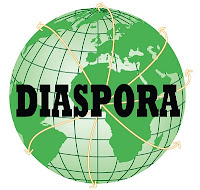 1. Dispersed Armenians vs. Diaspora
1. Dispersed Armenians vs. Diaspora “Fixed Menu” Institutions that make up the organized community – e.g., schools, churches, cultural, charitable, social, athletic, political parties, lobbies, conferences, trade associations.
The Silent Majority and the institutional vacuum in which they live
2. Homeland vs. Armenian State
3. Relationship
Modalities of Relationship
Patterns of human interaction between Diaspora and Armenia - tourism, exchanges, family ties
Economic relations between Diaspora and Armenia – charity, consumption, direct vs. indirect investment, support for culture, Conferences
East is East and West is West?
Repatriation – Bad Legacy of Repatriation during Soviet period
Attitudes of Diaspora toward Armenia, Armenia toward Diaspora, attitudes of others toward both, attitudes of various Diasporan communities toward each other
4 Sub-Groups 184.1 Religious affiliation - Armenian Apostolic, Armenian Catholic, Russian Orthodox, Armenian
Evangelical Protestant, other non-Armenian Christian, believer, agnostic, non-believer
Post-Genocide & Cold-War Legacy
Inner Diaspora (within the CIS vs. outside the CIS), residual cold war mentality
External Diaspora – relationships and diverse cultures of Armenian communities and hyphenated Armenians - Europe, Mid-East, Turkey, Australia, South America communities
New Diaspora (from Armenia) vs. Old Diaspora
Eastern vs. Western Armenian language and subcultures
The role of the causes underlying dispersion on the Diasporan mentality- Genocide, economic emigration, political persecution
Centrifugal vs. Centripetal forces, Convergences, Divergences, Hybrids Internalized
multiculturalism
Blurring of old boundaries, emergence of new faults along cultural lines, new alignments, cross-cutting institutions and individuals
5. Micro Issues - Individual Identity Issues
Typical life-cycle/patterns of a Diasporan individual/family
Tension between self-actualization and ethnic identity
Intermarriage, Assimilation
Positive Armenia/Armenian image, reputation incentive to identify as Armenian
6 External factors that impact relationship between Armenia and Diaspora, including geopolitical orientation, economic disparities
Relationship to non-Armenian Communities & Cultures – Ghettoization vs. Integration
7 Descriptions of Diaspora-Homeland Scenarios (“DH” Scenarios)
Hub & Spokes
Bilateral – Organized Diaspora vs. Organized Armenia
Organized Decentralization
Ad Hoc Decentralization
Repolarization
Alienation . . .
8. Evolution of DH Scenarios
9. Compatibility of Diaspora-Homeland Scenarios with preliminary Armenia2020 Scenarios
10. Diaspora-Homeland Scenario trajectories
.


0 comments:
Post a Comment
Please Update/Correct Any Of The
3700+ Posts by Leaving Your Comments Here
- - - YOUR OPINION Matters To Us - - -
We Promise To Publish Them Even If We May Not Share The Same View
Mind You,
You Would Not Be Allowed Such Freedom In Most Of The Other Sites At All.
You understand that the site content express the author's views, not necessarily those of the site. You also agree that you will not post any material which is false, hateful, threatening, invasive of a person’s privacy, or in violation of any law.
- Please READ the POST FIRST then enter YOUR comment in English by referring to the SPECIFIC POINTS in the post and DO preview your comment for proper grammar /spelling.
-Need to correct the one you have already sent?
please enter a -New Comment- We'll keep the latest version
- Spammers: Your comment will appear here only in your dreams
More . . :
http://armenians-1915.blogspot.com/2007/05/Submit-Your-Article.html
All the best